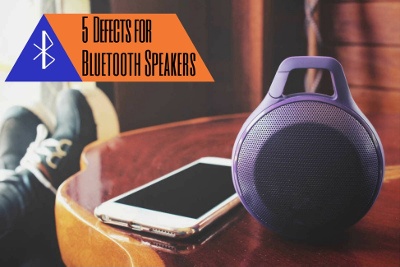 Speakers are the source of much of the music we enjoy. And thanks to Bluetooth technology, we’re now able to receive phone calls, listen to podcasts and much more wirelessly. But it’s important to know what kind of quality defects for Bluetooth speakers can ruin a user’s experience.
Speakers are the source of much of the music we enjoy. And thanks to Bluetooth technology, we’re now able to receive phone calls, listen to podcasts and much more wirelessly. But it’s important to know what kind of quality defects for Bluetooth speakers can ruin a user’s experience.
If you’re considering importing Bluetooth speakers, you need to have reassurance that they’ll function properly. Otherwise, you might end up killing the mood, instead of setting it.
The most common problems with Bluetooth speakers are relate to the sound produced by the speakers and their connectivity to a Bluetooth-capable device. Knowing these defects for Bluetooth speakers can help you better understand what problems might affect your order. And if you know what can go wrong, you can prevent it from happening to ensure that your customers have a pleasant experience with your product.
Here are some common defects found in Bluetooth speakers and how you can test for them:
1. Low speaker sensitivity
Low sensitivity is a somewhat common defect in Bluetooth speakers. Speaker sensitivity (efficiency) is determined by the amount of power needed to drive or operate a loudspeaker. It’s a 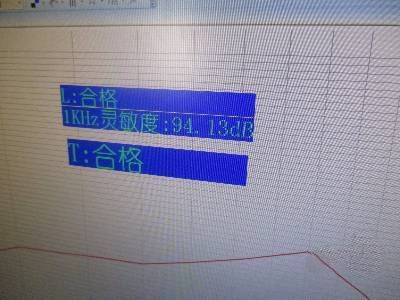 measurement of the amount of sound output derived from a speaker with one watt of electricity from an amplifier. The resulting number is expressed in decibels (dB). Simply put, the higher a speaker’s sensitivity rating, the louder it is.
measurement of the amount of sound output derived from a speaker with one watt of electricity from an amplifier. The resulting number is expressed in decibels (dB). Simply put, the higher a speaker’s sensitivity rating, the louder it is.
A speaker shouldn’t require significant additional power input for you to turn up the volume slightly. Inefficient speakers that demand lots of power for only a low volume of sound might quickly deteriorate and break. And higher-end speakers tend to have a longer product lifespan and greater sensitivity.
Testing speaker sensitivity
There are a few common methods for testing speaker sensitivity. Here’s one simple option:
- Place a microphone 1 meter in front of the speaker.
- Connect the microphone to a sound level meter to measure the exact level of noise coming out of the speaker.
- Send the speaker 1 watt of electricity and measure the sound level that comes out. This measurement, expressed in decibels (dB), is the sensitivity of the speaker.
Inefficient speakers waste more of that 1 watt of power when trying to convert it to sound because some power lost as heat.
Aside from this test, you can use a free software called HOLMImpulse to check sensitity. It needs to be installed on a Windows PC that’s also able to connect to Bluetooth. This tool will give you very specific information about your speakers, such as its frequency-response, impulse-response and more.
Another way you can take testing into your own hands is by using software from the company Audio Precision. While not free, factories that manufacture speakers often use software from this company for their testing and quality control needs. This may also be an effective testing solution for you if you’re manufacturing or importing Bluetooth speakers.
2. Poor Bluetooth signal
A Bluetooth speaker that can’t connect because of poor signal strength isn’t of much use. Out of all consumer complaints, signal dropping is one of the most common defects for Bluetooth 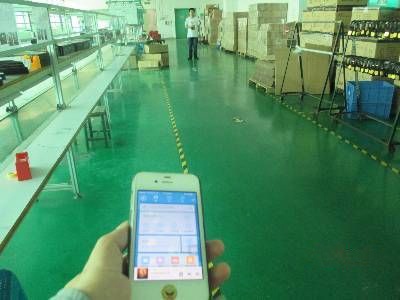 speakers. The user experiences a poor signal as “spottiness”, during which the output comes and goes or stops entirely. It’s normal to have some signal disruption when there are multiple obstructions between a signal source and Bluetooth-equipped device.
speakers. The user experiences a poor signal as “spottiness”, during which the output comes and goes or stops entirely. It’s normal to have some signal disruption when there are multiple obstructions between a signal source and Bluetooth-equipped device.
The workable distance of the Bluetooth signal should be written on the retail packaging and/or instruction manual. Signal strength is typically measured in:
- Decibels (dBm) when expressed as an absolute value or
- Received Signal Strength Indicator (RSSI), which is a relative index (see dB vs. dBm for further explanation)
There should be no obstruction or signal interference when testing for Bluetooth signal strength.
Testing Bluetooth signal strength
This defect for Bluetooth speakers is fairly easy to test for. In fact, you won’t need any expensive equipment to measure signal strength.
You can download a free software called Bennett to monitor your Bluetooth devices and determine their signal strength from your computer. Using a software like this one can give you a fairly precise reading of signal strength to indicate whether the signal does not meet specifications.

3. Phone call connection
Have you ever tried answering your phone through your Bluetooth speaker and it cuts out? This might be because they’re having trouble connecting.
On some occasions, phone software might be to blame. Updating it can potentially solve problems with signal, a phone call connection or any other issues you’re having. But you’ll typically need standardized testing to verify the phone call connection on several units.
Testing phone call connection
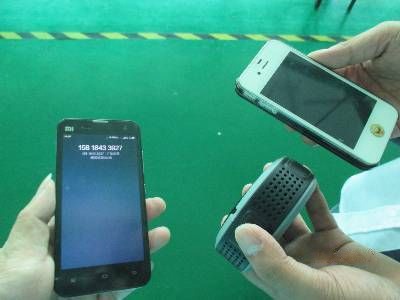 To test a phone call connection, simply pair your phone (with a workable sim card) with the Bluetooth speaker and ensure they’re connected, then:
To test a phone call connection, simply pair your phone (with a workable sim card) with the Bluetooth speaker and ensure they’re connected, then:
- Call the Bluetooth-paired phone using another phone.
- Any music playing through the speaker should be muted automatically once the call is received. The ring tone should then be audible through the speaker.
- Press the Play/Pause/Phone button to answer the call. You should receive the call through the speaker, and the speaker should function as a loudspeaker.
- Press the Play/Pause/Phone button again to end the call and resume playing music.
A Bluetooth speaker fails this test when it doesn’t follow the steps above for receiving phone calls.
4. Speaker frequency issues
Frequency issues are another common defect for Bluetooth speakers. Frequency is a measurement of the speaker’s ability to produce sound. The range of human hearing is generally 20 Hz - 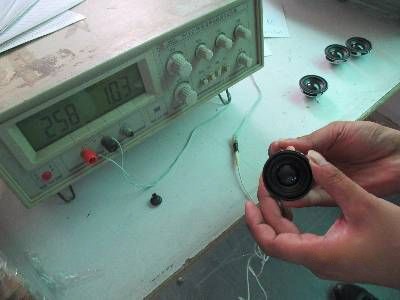 20,000 Hz. And speakers typically have a frequency range of 120 Hz - 22,000 Hz. When a speaker’s frequency is too high or low the user often can't here the sound. Other times the speaker may produce an audible buzzing or static sound or a vibration, with adequate amplitude.
20,000 Hz. And speakers typically have a frequency range of 120 Hz - 22,000 Hz. When a speaker’s frequency is too high or low the user often can't here the sound. Other times the speaker may produce an audible buzzing or static sound or a vibration, with adequate amplitude.
Testing speaker frequency
Unlike testing for other defects for Bluetooth speakers, testing frequency often requires special equipment. A product inspector testing the speaker at a factory will often use a frequency response tester to check frequency range. They’ll also check for any vibration or buzzing coming from the speaker during operation. Factories that produce audio equipment typically have this tool. But it’s still worth asking before visiting or sending an inspector to check frequency.
A simpler, though less accurate, way to check speaker frequency is to play a series of sounds through the speaker and check the speaker’s response. There are many speaker test audio and video clips available for free online, which you can use to check frequency range.
5. Rattling in a speaker
This defect refers to a rattling sound heard during operation that’s caused by loose parts in a Bluetooth speaker. During production, a worker might have installed a screw incorrectly, soldered a connection insecurely or may have dropped foreign debris into the speaker during assembly. The speaker may also have been damaged during transit, which could cause a rattling sound during use.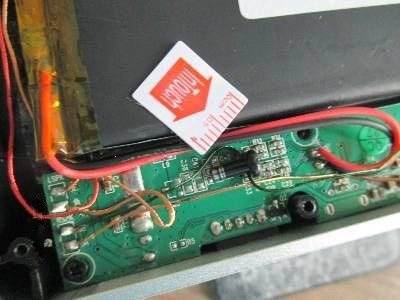
Testing for rattling
This defect is typically obvious, although you may only hear rattling when the speaker is operating at certain sound frequencies. To test for rattling, gently shake the speaker by hand and listen for any loose parts rattling inside. Then play sound through the speaker at various frequencies and check again for any abnormal vibration or rattling sound. It may also be helpful to repeat these steps after conducting a carton drop test with the speaker inside its packaging (related: 5 Steps to the Carton Drop Test).
If you suspect loose parts but can’t hear any rattling, you can also open up the speaker to check. Just be sure that the speaker isn’t charging in a power outlet or otherwise connected to a hazardous power source.
Conclusion
Relying on a speaker for entertainment can quickly turn into a frustrating experience if it doesn’t work properly. And as with many product types, consumers can be particularly unforgiving when reviewing faulty electronics.
Whether you’re an end consumer or an importer, awareness of these defects for Bluetooth speakers can help you avoid frustrations. By knowing what to look out for, you can advise suppliers of your product concerns. You’ll also have the personal knowledge to identify these problems during your own inspection. So the next time you look at an order of Bluetooth speakers, keep these defects in mind to help set the mood, rather than ruin it, for your customers.







